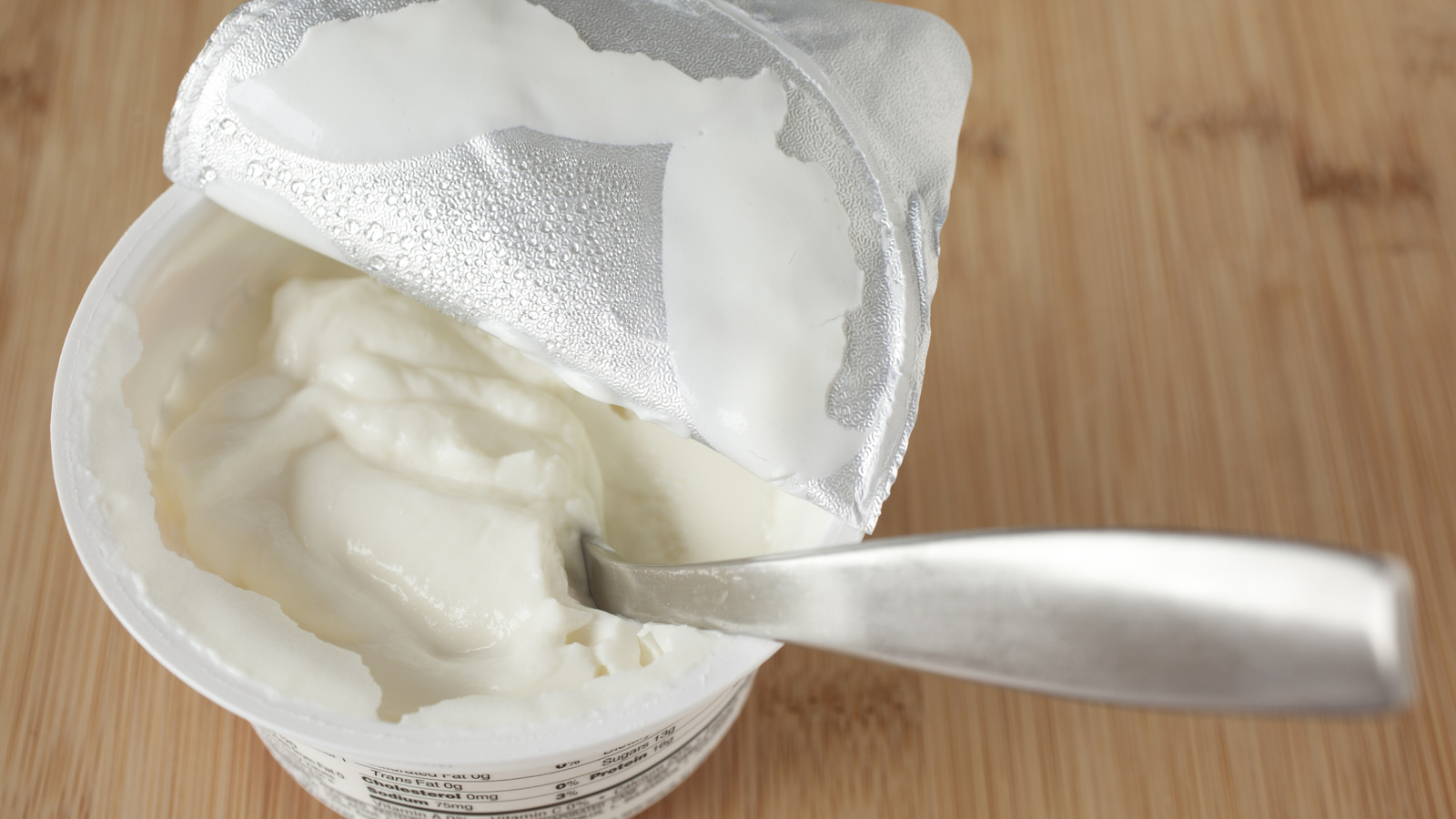Yogurt may seem like one of those unknowable mystery foods (like unbroken emulsions or lactofermented veggies), but in reality, it’s a two-part combination of live active probiotic culture and some type of milk. It’s why making homemade yogurt is so affordable – but store-bought yogurt totally gets the job done, too. However, if you’ve ever opened a carton of store-bought yogurt to find it capped by an unappetizing-looking layer of translucent liquid, don’t freak out.
That thin, white-ish liquid sitting on top of your creamy yogurt isn’t water; it’s whey. The separation of acid whey and milk curds is a process called “syneresis.” It’s a naturally occurring textural defect, and it’s totally harmless. Syneresis also happens with other gelled mixtures, like sour cream, ketchup, and ice cream (in the form of ice crystals).
High-protein yogurts tend to seep less whey over time, as a higher protein content helps facilitate textural firmness. Some store-bought yogurts are also manufactured with the addition of stabilizers, like pectin, starch, gelatin, or xanthan gum, all of which reduce separation and whey release. Subsequently, yogurts labeled “all natural” are likely to not have stabilizers and demonstrate more separation. Strained yogurts, like skyr and Greek yogurt, also tend to release less whey during storage (and bettergoods is our favorite brand of store-bought Greek yogurt, for the record).
Additionally, yogurt syneresis can be influenced by post-fermentation acidification, as the active bacteria cultures in the yogurt continue to produce natural enzymes during storage, therein weakening the yogurt’s gelling properties. Speaking of storage, the holding temperature of your home refrigerator can be a contributing factor to syneresis as well. Colder temperatures reduce syneresis, while exposure to warmer temperatures can increase whey release.
The whey to go is up to you: Stir that excess liquid back in, or dump it out
Ultimately, that top liquid layer isn’t dangerous or a sign of spoilage, and it won’t impact the taste of your yogurt. So should you stir it back into the batch or dump it out? The short answer is, it depends on your preference. If you prefer a thinner consistency from your yogurt, grab a long-handled spoon or a rubber spatula and stir that nutrient-dense whey back in.
Alternatively, if you like your yogurt with a thicker, richer consistency (or if that liquid whey visual turns you off … we get it), pour the excess whey off, but don’t just dump it down the drain. Pour it into a resealable container and use it for other culinary purposes. You can use it to tenderize meat as a pre-cook marinade, to thicken homemade stocks, or even as a starter for your next batch of homemade yogurt. That whey also makes a vitamin-rich addition to smoothies, soups, and homemade salad dressings.






